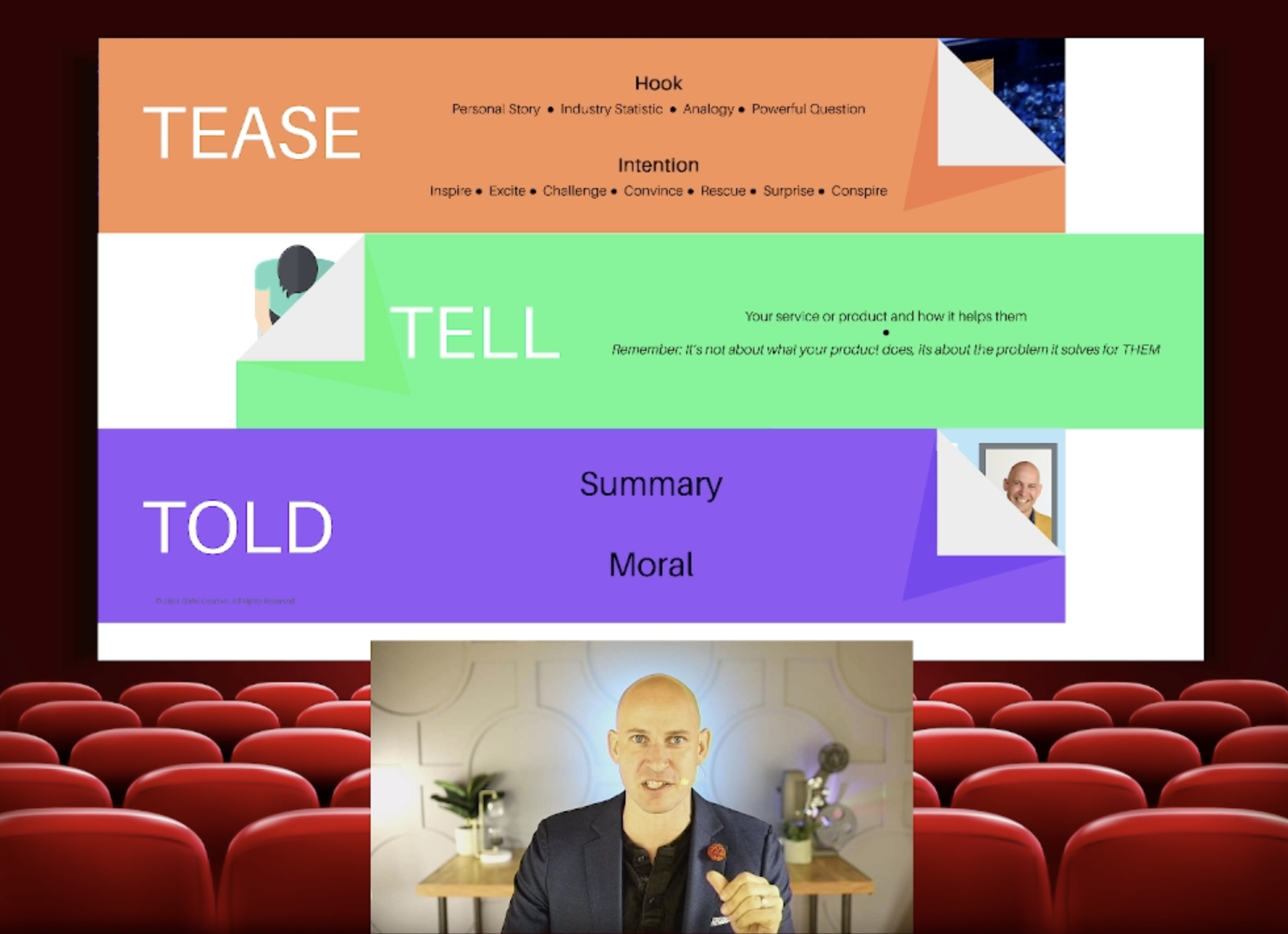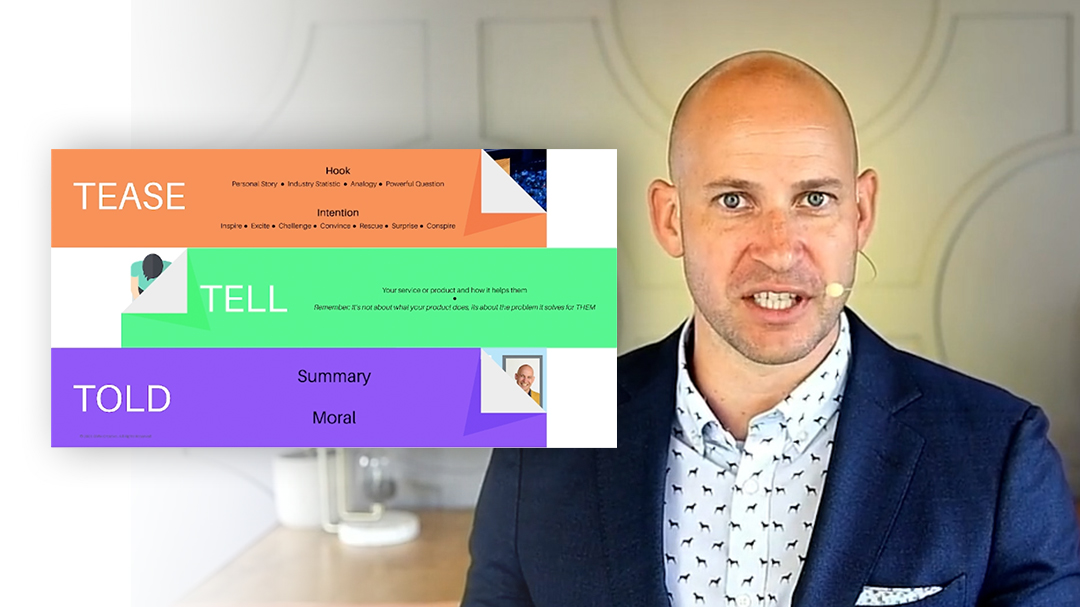Here is an overview of the T3 storytelling technique
The T3 Storytelling Technique
I’m going to give you a quick overview of the T3 storytelling technique. Tease, Tell, Told. We use it when we’re writing scripts for videos, or when we’re helping people figure out what their content is going to be for marketing funnels, brand stories, or scriptwriting. It works everywhere! Let’s jump right in.
1. The Tease
Think of teasing as two parts: the hook and a strong intention. The hook is what grabs their attention, while the intention draws them in. Some really effective ways of hooks that work well are a personal story, an industry statistic, an analogy, or a powerful question.
Now, Before you start writing before you start turning on your camera, ask yourself “what is my intention?” If you’re a marketer, how do you want your audience to feel? How do you want to serve them? Come at it from that angle so that you’re very clear on your intention. Consider what emotions and benefits you want to help your audience reach for.
Make sure that your intention has a strong impact on the person with whom you are conversing. Are you trying to inspire them, excite them, challenge them, surprise them, or conspire? Notice the specific words I am using – these are powerful and actionable words. It’s not things like “to convey information” or “to educate”. So put some heart into your intentions and it will pay off.
”Consider what emotions and benefits you want to help your audience reach for

2. The Tell
Then you have your “Tell”. Now your “Tell” Is going to be the thing that you’re here to ‘Tell’ them about your product, service, what have you. Your “Tell” is the core message you’re trying to convey to your audience. It might be lots of different things, but keep in mind it’s the core message you’re trying to give them.
Remember, it’s not about the product or service you’re trying to sell them. It’s about their problem-solving challenges. So make sure you’re showing them what your content offers: “Hey, here’s how we can help solve this pain.” You could say something like, “We’ll show you how to do this thing more effectively”.
3.The Told
Now finally the “Told”. You’re “Told” is going to summarize what you said with a strong, moral to the story. The moral of the story is a critical component of the telling. Similar to traditional stories about Aesop’s Fables, such as “The Boy Who Cried Wolf,” it must get to the point, be concise, and be supported with some form of visual aids–—just like arranging a meal.
Conclusion
When you start using these three storytelling techniques, you’re going to have a proven technique that makes your life easier in business situations. When you put together marketing materials or sales materials in the future, use this structure: take personal stories and analogies from your daily life to grab your audience’s attention. Once you get the hang of it, you will never look back.
For more Online coaching, video production, and training tips, check out our premium Storied Teams courses. Make sure to take advantage of our free mini-course. In 30 minutes or less, you’ll feel a lot better about how you look and present on camera!


Recent Comments